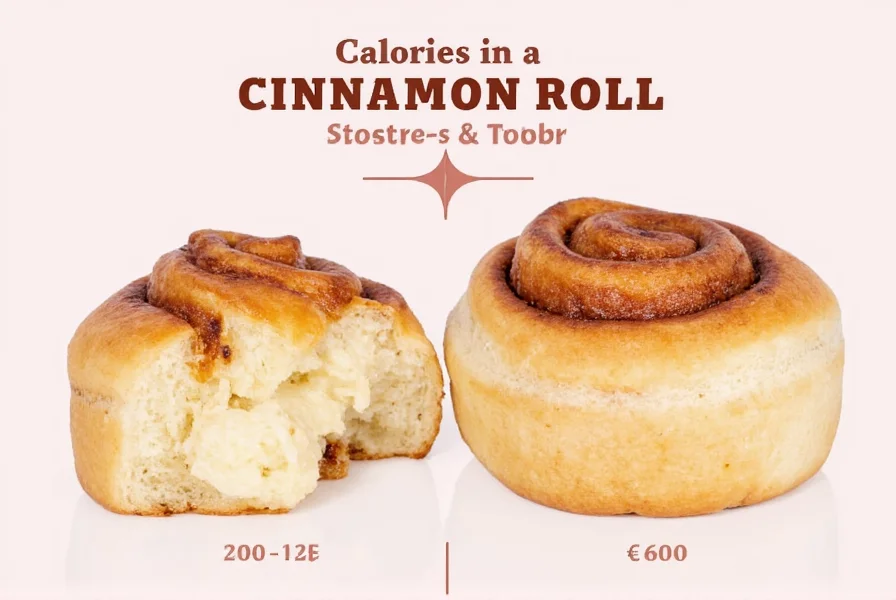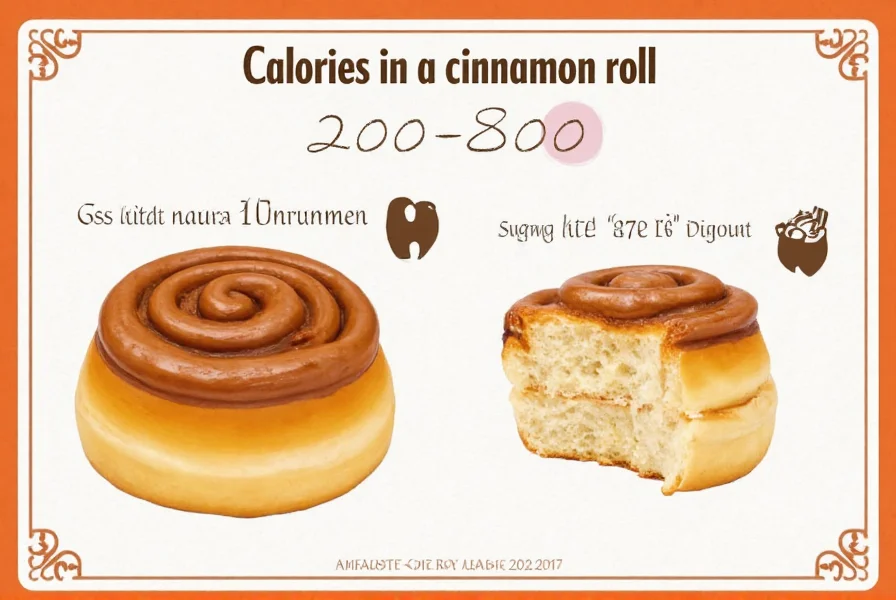Understanding the calorie content in cinnamon rolls is essential for those monitoring their dietary intake. While the classic pastry brings comfort and flavor, its nutritional profile varies significantly based on multiple factors. This guide provides accurate calorie information to help you make informed choices without sacrificing enjoyment.
Factors That Affect Cinnamon Roll Calorie Count
The calorie content in cinnamon rolls isn't uniform across all versions. Several key variables influence the final count:
- Size and portion: A mini cinnamon roll contains far fewer calories than a jumbo bakery version
- Dough composition: Enriched dough with eggs and butter increases calorie density
- Filling ingredients: Brown sugar, butter, and additional sweeteners significantly impact calories
- Icing or glaze: Cream cheese frosting adds substantial calories compared to simple sugar glaze
- Preparation method: Deep-fried versions contain more fat than baked varieties
Calorie Comparison Across Different Cinnamon Roll Types
| Type of Cinnamon Roll | Approximate Calories | Key Contributing Factors |
|---|---|---|
| Homemade (standard 3-4" roll) | 200-300 | Basic yeast dough, moderate filling, light glaze |
| Store-bought (single serving) | 250-400 | Preserved ingredients, consistent portioning |
| Bakery chain (medium) | 350-500 | Rich dough, generous filling, thick icing |
| Bakery chain (large) | 500-800+ | Extra-large portion, double icing, add-ons |
| Mini cinnamon roll (2") | 100-150 | Reduced portion size, less filling and icing |
Nutritional Breakdown of a Typical Cinnamon Roll
A standard 3-inch homemade cinnamon roll (approximately 250 calories) typically contains:
- Carbohydrates: 35-45g (primarily from refined flour and sugars)
- Fat: 8-12g (butter in dough and filling contributes most)
- Sugar: 20-30g (from both the filling and any icing)
- Protein: 3-5g (minimal protein content)
- Fiber: 1-2g (very low fiber content)
The majority of calories come from refined carbohydrates and added sugars, with significant contributions from fats used in the dough and filling. This nutritional profile explains why cinnamon rolls are considered an occasional treat rather than an everyday food.

How Cinnamon Rolls Fit Into a Balanced Diet
Enjoying cinnamon rolls while maintaining dietary goals requires awareness and planning. The American Heart Association recommends limiting added sugars to no more than 25g per day for women and 36g for men. A single cinnamon roll often contains 80-120% of these daily limits.
Dietitians suggest treating cinnamon rolls as an occasional indulgence rather than a regular breakfast item. When consuming them, consider these strategies:
- Share a large roll with someone else to reduce portion size
- Choose versions with less icing when available
- Pair with protein-rich foods to balance the meal
- Account for the calories in your overall daily intake
- Consider enjoying smaller portions more mindfully
Lower-Calorie Cinnamon Roll Alternatives
For those seeking to enjoy cinnamon flavor with fewer calories, several options exist:
- Whole grain versions: Using whole wheat flour increases fiber content while slightly reducing net carbs
- Reduced-sugar recipes: Cutting sugar by 25-30% in both dough and filling
- Lighter icing alternatives: Using Greek yogurt or light cream cheese instead of traditional frosting
- Mini portion sizes: Creating smaller rolls that satisfy cravings with fewer calories
- Baked instead of fried: Ensuring preparation method doesn't add unnecessary fat
Many home bakers have successfully created versions that maintain flavor while reducing calories by 30-40% through ingredient substitutions and portion control.

Reading Nutrition Labels for Store-Bought Cinnamon Rolls
When purchasing pre-packaged cinnamon rolls, understanding nutrition labels is crucial. Look beyond just the calorie count to assess:
- Total sugar content (not just calories from sugar)
- Amount of saturated fat
- Presence of artificial ingredients or preservatives
- Serving size (many packages contain multiple servings)
Be aware that "reduced calorie" claims can be misleading if the product still contains high amounts of sugar or unhealthy fats. Always compare the actual nutrition facts rather than relying on marketing claims alone.
Frequently Asked Questions
How many calories are in a Cinnabon classic roll?
A standard Cinnabon Classic Cinnamon Roll (approximately 8.4 ounces) contains about 880 calories. Their Minibon version contains approximately 330 calories per roll.
Are homemade cinnamon rolls healthier than store-bought?
Homemade cinnamon rolls can be healthier when you control the ingredients. You can reduce sugar content, use higher quality fats, and avoid preservatives. However, traditional homemade recipes often contain similar or higher calorie counts than commercial versions due to generous use of butter and sugar.
What makes cinnamon rolls so high in calories?
Cinnamon rolls derive most of their calories from refined carbohydrates (flour), added sugars in the filling, and fats (butter) used in both the dough and filling. The icing or glaze adds significant additional sugar and fat. A typical roll contains 20-30g of sugar and 8-12g of fat, contributing substantially to the overall calorie count.
Can cinnamon rolls fit into a weight loss diet?
Yes, cinnamon rolls can fit into a weight loss diet when consumed in moderation and accounted for in your overall calorie budget. Consider sharing a roll, choosing smaller portions, or enjoying them occasionally rather than regularly. Some people successfully incorporate them using the 80/20 rule—eating nutrient-dense foods 80% of the time and allowing treats like cinnamon rolls the remaining 20%.
How can I reduce calories in homemade cinnamon rolls?
To reduce calories in homemade cinnamon rolls, try these modifications: use half the recommended sugar in both dough and filling, substitute some butter with unsweetened applesauce, create smaller portion sizes, reduce icing quantity, or use a light cream cheese frosting instead of traditional sugary glaze. These changes can reduce calories by 25-40% while maintaining enjoyable flavor.











 浙公网安备
33010002000092号
浙公网安备
33010002000092号 浙B2-20120091-4
浙B2-20120091-4